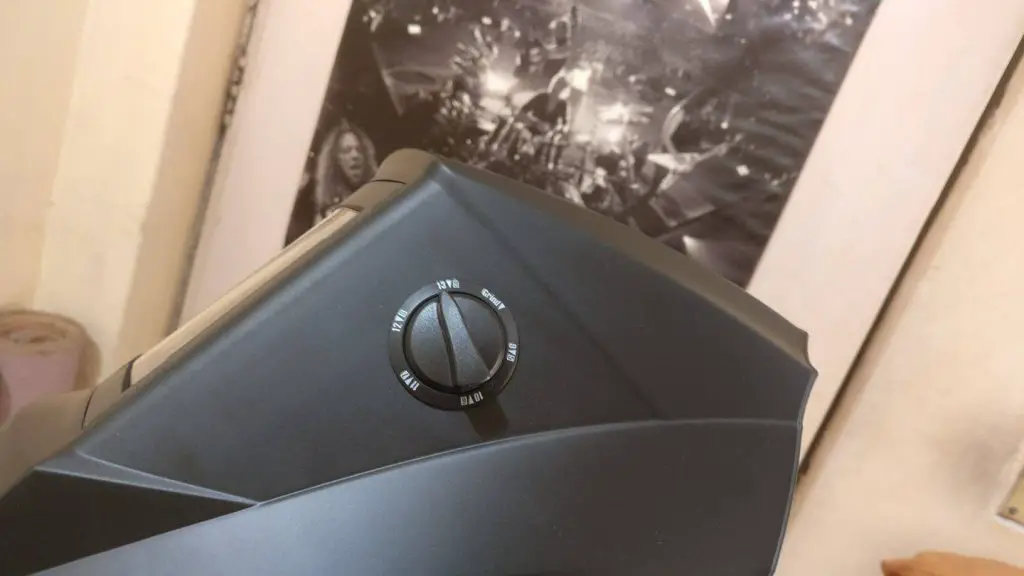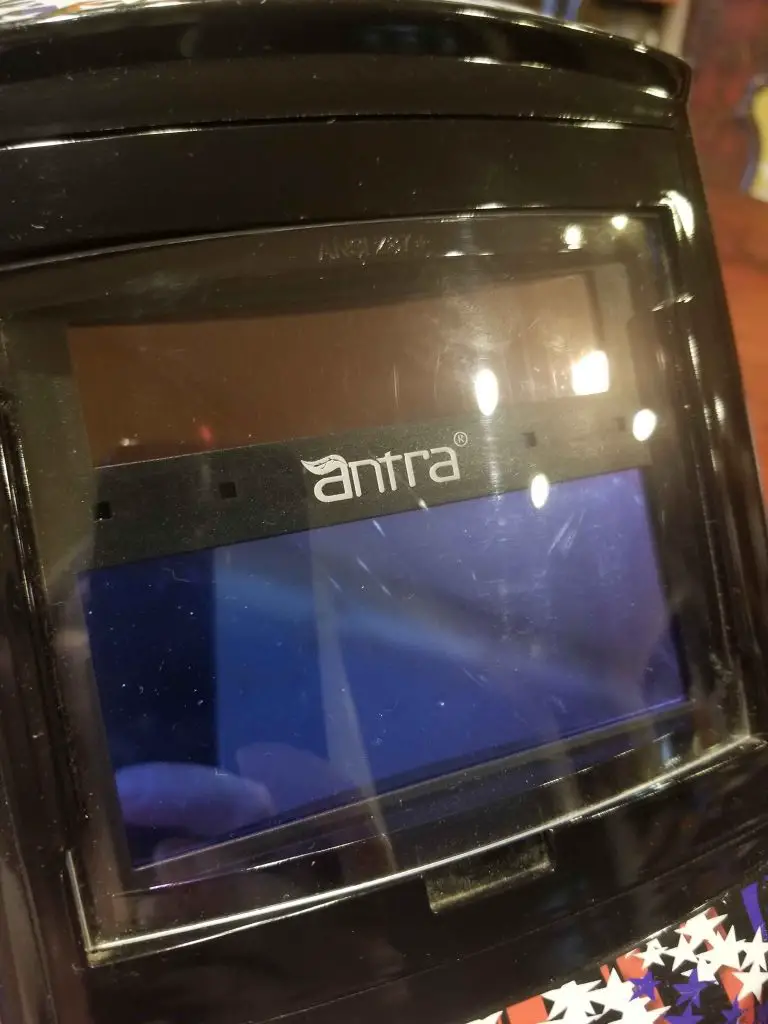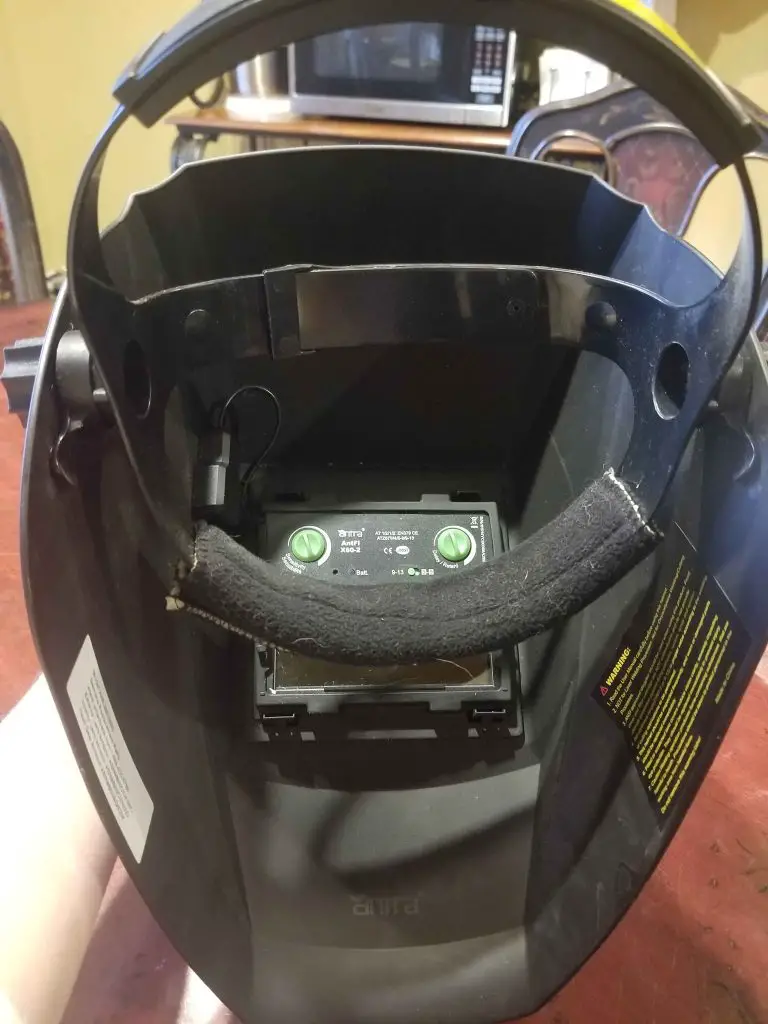The Antra AH6-260 welding helmet packs many goodies into a reasonably priced package. With many features of much higher-priced helmets, it’s hard not to take a closer look at them. So let’s do just that.
Table of Contents
What is a welding helmet used for?
The welding helmet is one of the most recognizable and important pieces of hardware a welder has in his arsenal. A helmet should be comfortable and protect the face, eyes, and skin from welding spatter and sparks. But more importantly, the helmet should also protect the eyes from vision-damaging ultraviolet and infrared rays emitted by the arc.
At the same time, the helmet must allow the welder to effectively see the weld pool clearly. Many modern welding helmets have variable shade adjustments that allow the helmet to be used while cutting with a plasma cutter or an oxy/acetylene torch and when using a grinder. This makes the modern helmet much more versatile than its predecessors.
What features does the Antra AH6-260 welding helmet have?
Introduced in 1981, the auto-darkening lens was an industry-changing innovation after it became mainstream. The welding industry has experienced many innovations in the last few decades, but this feature ranks with the best. The ability to see and set the weld pieces up in front of you utilizing both hands before the welding begins is a great asset.
Before the auto-darkening lens, the welder would need to flip a lens with their offhand or do the head nod trick and hope the helmet flips perfectly in front of their eyes. The result of the auto-darkening helmet has been better welds, less physical fatigue and time saved.
The four light sensors on this helmet allow for the more efficient pick up of light from the arc, which triggers the darkening process. This must be compared to lesser helmets with only 2 or 3 sensors. In addition to four light sensors, the Antra AH6-260 has two additional adjustments for fine-tuning purposes. One regulates the light level at which the darkening process will be triggered (sensitivity). The other will regulate the speed at which the lens returns from dark to light after sensing the light generated by the arc is no longer there (delay).
The Antra AH6-260 has a variable shade lens that adjusts from a low of 4 to a high of 13, covering just about any welding, cutting or grinding job without having to switch to a different hood or goggles between jobs. The ability to filter the light at a level best suited for the welder increases work quality and reduces eye strain. This wide adjustable shade range is usually reserved for more expensive helmets.
A cheater or magnifying lens holder is standard for those whose eyesight may need a little help for close-up work. A magnifying lens may nullify the need for the welder to wear eyeglasses while welding. However, there is plenty of room for most to wear eyeglasses underneath the hood if needed.



ANSI Standards
The 15 oz. lightweight helmet is made from high-impact polyamide nylon and will operate in temperature ranges from 14°F-131°F. All welding helmets must meet strict safety standards around the world. For instance, the United States standard is ANSI Z87.1. In Canada, it is CAN/CSA Z94.3.
These standards address light leakage, flame resistance, and impact resistance. The standard requires that auto-darkening helmets provide full protection against UV and IR even when not in the darkened state. The standard is voluntary, so buyers should confirm that the helmet is ANSI Z87.1 compliant. The Antra AH6-260 meets standards ANSI Z87.1, EN379 CE, and CSA Z94.3.
While the Antra comes with extra inner and outer lenses, there are a few add-ons and replacement parts that might come in handy such as:
- Exterior lens covers
- Inner lens covers
- Head Gear
- Hard hat adapter
- Sweat Band
- Auto Darkening Lens
- Cheater Lens
It also comes with a one-year warranty.
How does the auto-darkening feature work?
The auto-darkening welding helmets have an LCD or liquid crystal display lens sandwiched between two polarizing lenses like those used in some sunglasses. The process gets complicated but has to do with the LCD mechanism and its ability to rotate the light rays 90 degrees between the polarized lenses.
When unrotated (default position), the light rays are undisturbed. After rotating, much of the light is blocked.
How to adjust the sensitivity and delay settings?
The auto darkening delay and sensitivity adjustments are there so the operator can set the helmet up for the job. The delay setting should be set at a level the user finds most comfortable. The delay setting is often most noticeable when the arc is erratic. For instance, if you are making several tacks on a large project, a short delay will speed up the process.
On the other hand, a longer delay is useful when welding with higher amperages leaving the weld still red hot for a short time after the welding process has stopped. The still red-hot metal emits harmful UV rays until it cools.
The same can be said about the sensitivity setting. The sensitivity should be turned all the way up to begin with. Once comfortable, the user can begin reducing the sensitivity until they find the best setting. The sensitivity setting can be useful when welding with very low amperage settings causing the light emitted to be relatively low, such as when low amp TIG welding.
Never use a self-darkening lens that is not working properly. Eye damage can occur.
How do you correctly set the variable shade lens?
The welder should always start on the high end of the recommended shade or filter setting for the type of job being performed.
Then, make small adjustments until the most comfortable setting is found. The most comfortable setting is usually between enough light coming through to see the weld pool clearly, being able to take the weld where you want it to go, and yet continuing to protect your eyes.
Recommended shade ranges for various types of welding depending on amperages are as follows:
- Stick – 9-13
- MIG – 10-13
- MIG Aluminum – 10-13
- Flux-Core – 10-13
- TIG – 9-13
Pros
- Lightweight
- Low cost
- Great shading range
- Auto Darkening
- Comfortable
- 4 Sensors
- Extra Lenses
- Lots of Great Reviews
- Optical Clarity
- One Year Warranty
Cons
- Battery life has been an issue with some units sold
- The auto-darkening function has been an issue with a small number of units sold
- The helmet shell is a little flimsy
- Headgear fasteners tend to loosen and stop holding the helmet in the up position
- Headgear is on the flimsy side
- Smaller viewing area
Conclusion
A great helmet for the price. But, if you are hard on equipment or work in challenging environments, this may not be the helmet for you. Chances are this helmet will last the weekend warrior hobby welder several years if taken care of.
Anyone who plans on using a helmet more frequently and for extended periods may want to consider a more robust helmet. The higher-end helmets will cost more, and you may be able to afford three of the Antra AH6-260’s for the same price as one higher-end helmet.

